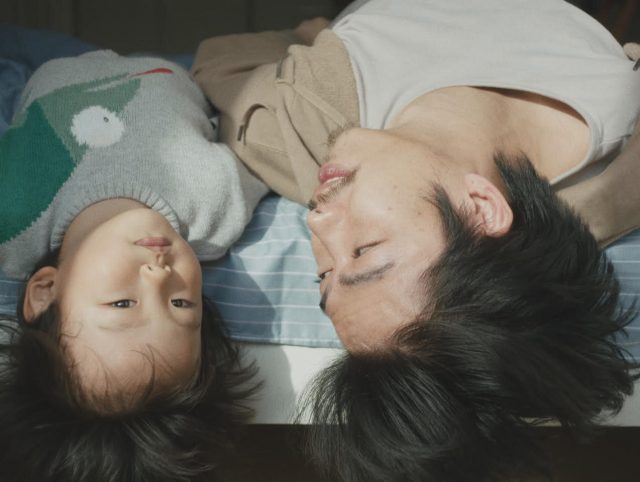The Year of the Everlasting Storm: These Unprecedented Times, by David Bax

It would be embarrassingly trite for me to make some platitudinal observation about how the pandemic has “kept us apart but brought us together” or something like that. But there is something novel and almost intimate in the way that we’ve been given digital windows into other people’s private spaces, from friends to coworkers to celebrities and media personalities. The pandemic-inspired anthology film The Year of the Everlasting Storm taps into the reality that, for many of us, the look and feel of the era that started in early 2020 and has yet to end is made up of domestic signifiers; dining rooms and knick knacks, pets and relatives (immediate and otherwise). The seven filmmakers assembled here give us glimpses of a world that has become more alike but seen through unique sets of eyes.
There’s a blend of fiction and documentary on display here; in the case of Jafar Panahi’s “Life”–as has been his mode for the last decade–both modes seem to exist at once. But, with the exception of David Lowery’s comparatively high-concept “Dig Up My Darling,” which appears to take place in the near future and stands out from the pack in a bad way, naturalism prevails even in the invented narratives. On the whole, the filmmakers meet the fraught moment with sober restraint and it pays off. Too much bravado would likely have seemed crass in the midst of a pandemic that won’t end.
That muted approach may also just be a natural extent of the damper put on so many of our lives by the ceaseless self-quarantining. Despite its global reach, it’s remarkable how alike the experiences of the characters are. No matter when your country observes the new year, for instance, it’s likely you celebrated from home, via physical or digital distance from others, if at all.
As The Year of the Everlasting Storm goes on, the circumstances–the same four walls–begin to feel normal, just like they did for so many of us. Laura Poitras’ “Terror Contagion,” the entry least directly connected to the pandemic, may actually be the most indicative of its realities. It’s a documentary made entirely on Zoom or comparable technologies. Of course, we’ve already gotten plenty of films like that but what stands out here is the absence of any acknowledgement or gimmick. It’s just how things are now. But then suddenly, for instance, characters drive into the city like the pair in Domingo Sotomayor’s “Sin Titulo, 2020,” encountering miles of empty boulevards, and the devastating scope of the situation suddenly shocks anew.
Sotomayor’s entry is one of the best, in no small part because of how vividly she captures the way the pandemic sounds; the quiet, the soft rise of nature noise, the way every moment of daylight seems like it’s still just after dawn. And if Sotomayor nails the audio facet of quarantining, Apichatpong Weerasethakul’s “Night Colonies,” the clear champ here, gets the feeling of it right. To try to describe the transfixing simplicity of “Night Colonies” would be to do it a disservice but the way it garners a mix of revulsion and awe is a testament to the fact that there are still things to be said in this world just by deciding where to point a camera.
What I will reveal about that culminating entry is that it is concerned with the non-human experience of the pandemic. In fact, a number of these films include animals or, as in the case of Anthony Chen’s affecting opener “The Break Away,” small children. An interest in beings who don’t know what’s happening in the world proves to be an indispensable point of view for The Year of the Everlasting Storm. By not tritely attempting to say something about our times, it ends up revealing more.




























